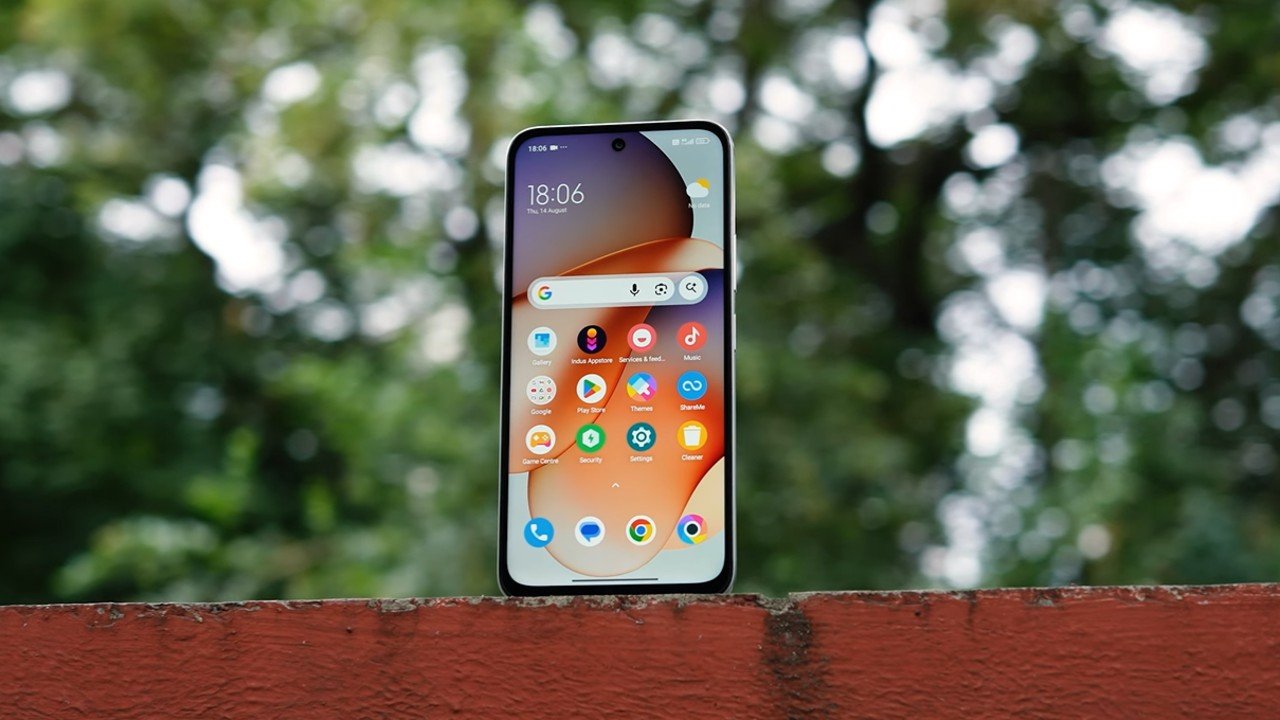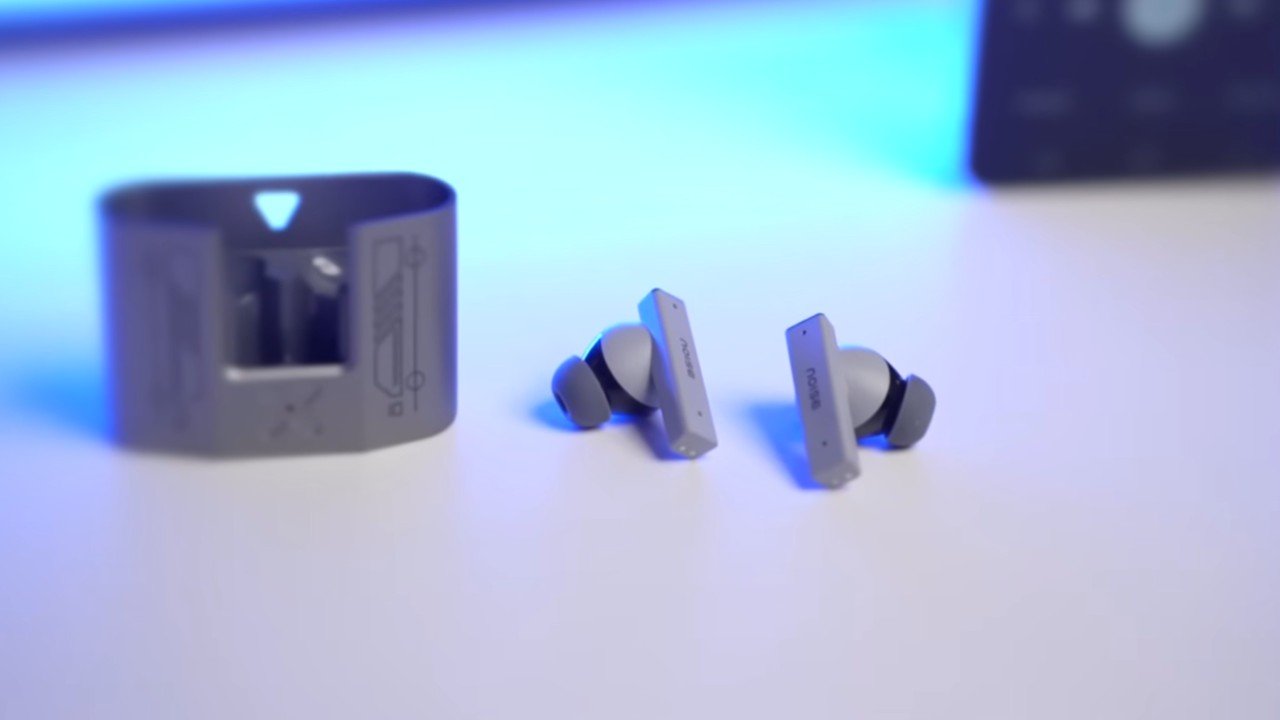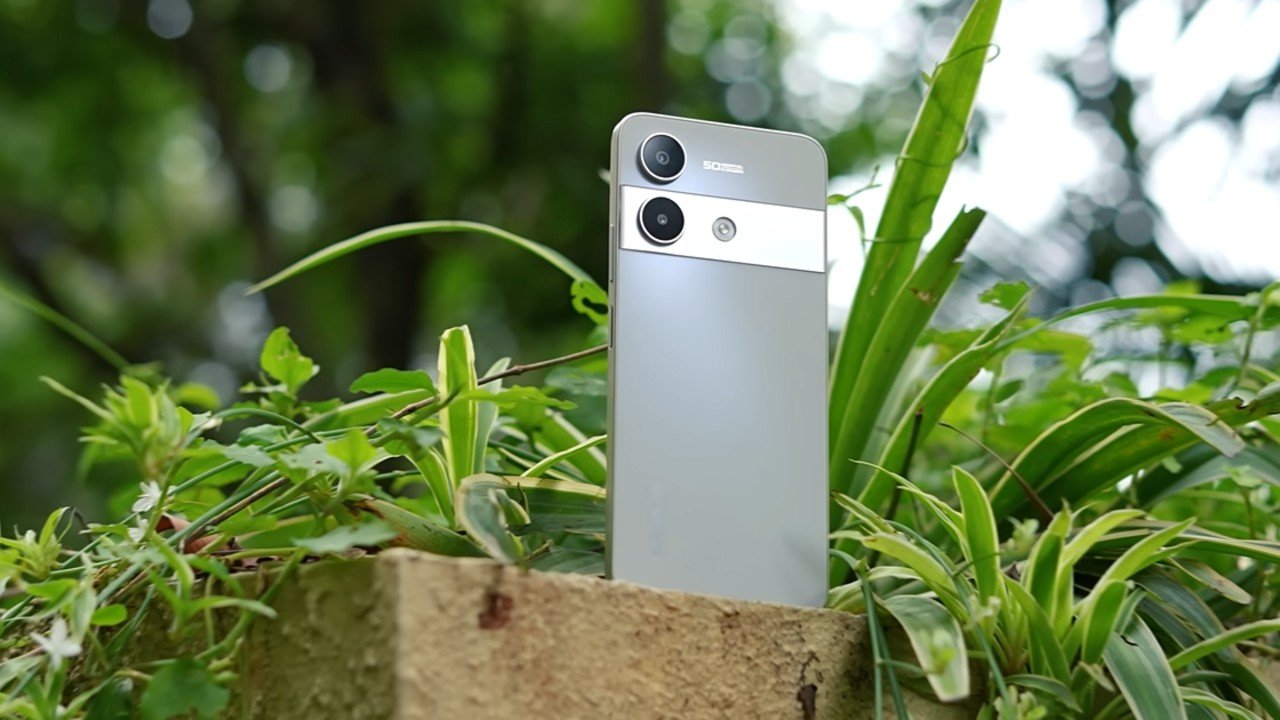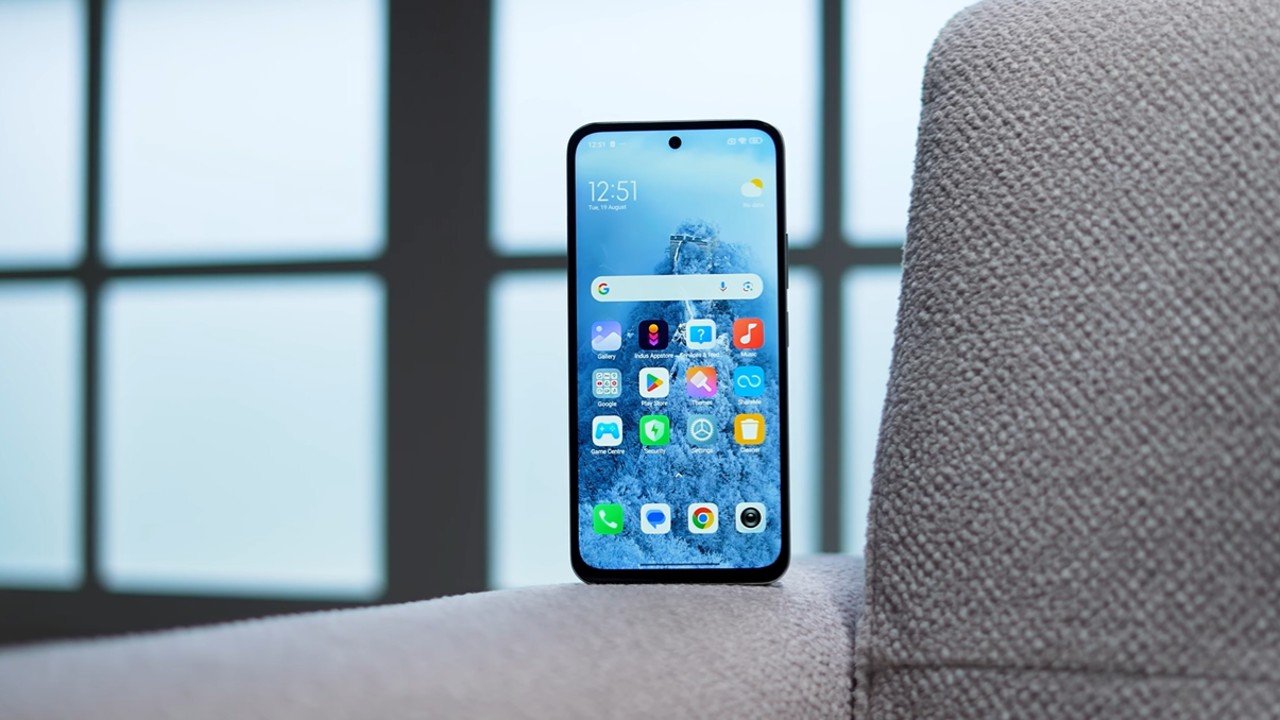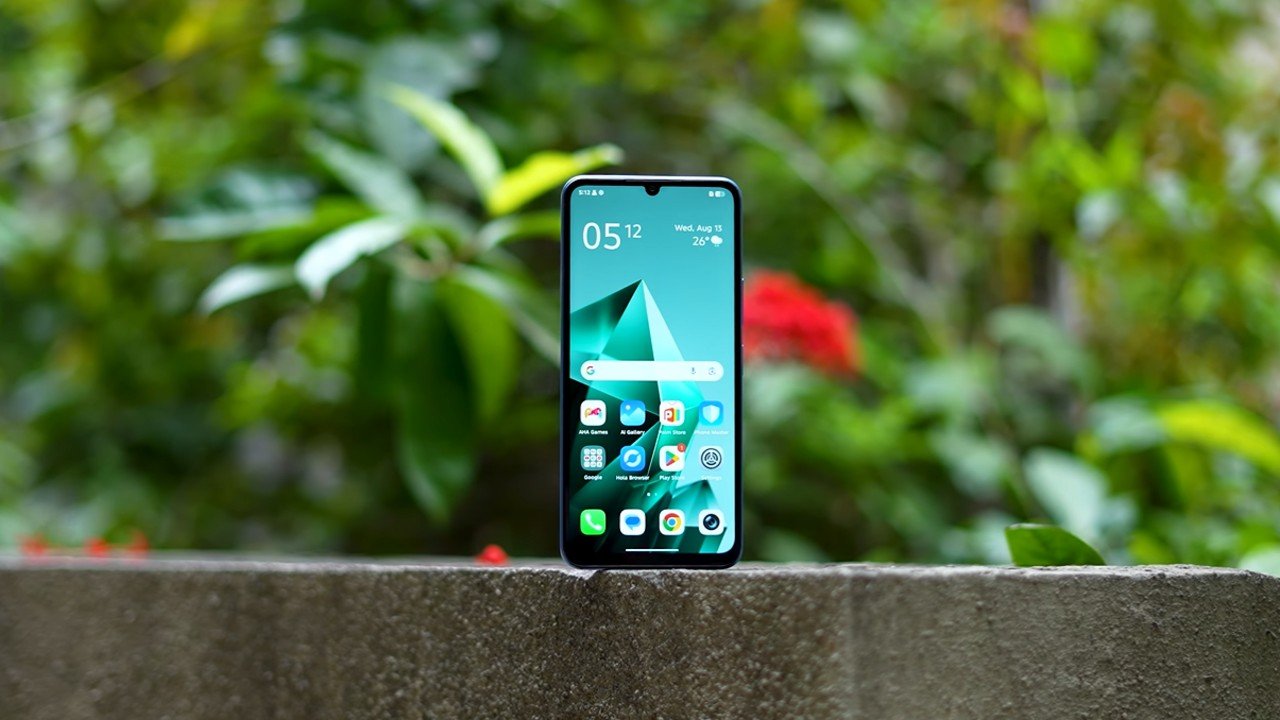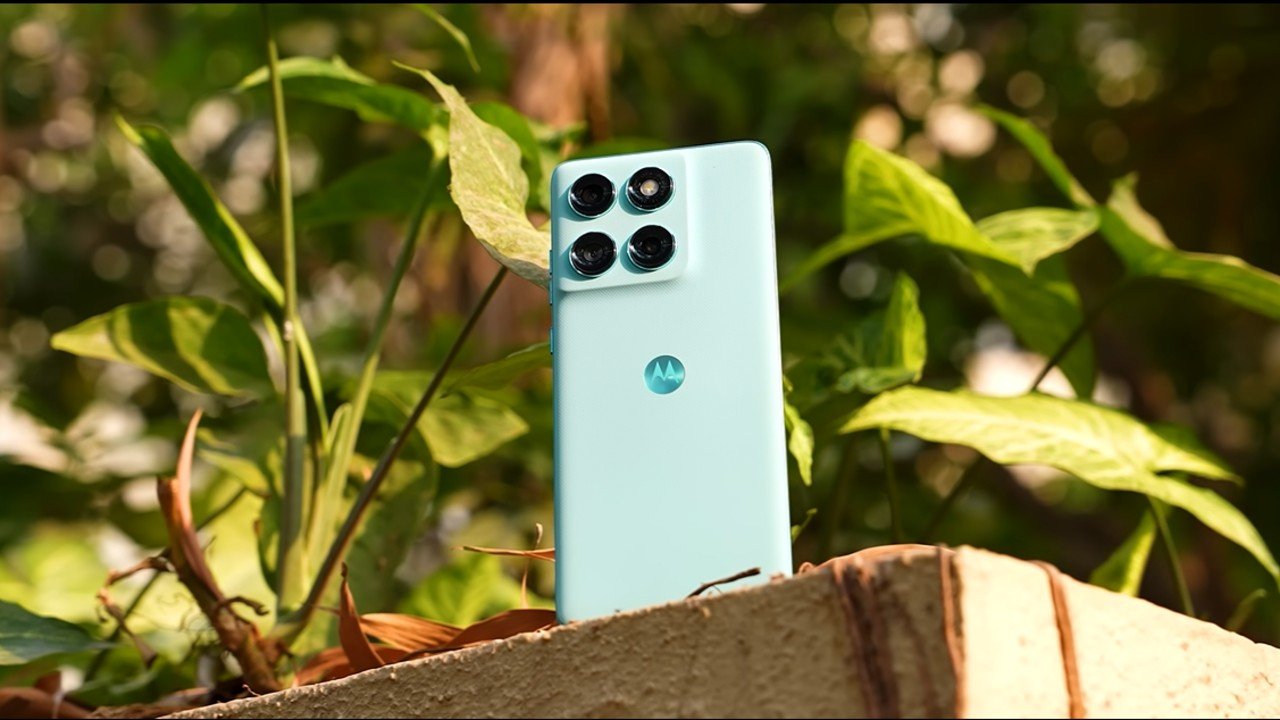Introduction – Poco’s Latest Midrange Champion
2025 was the year of Poco going on a roll with its M-series smartphones, revolutionizing the way people think about budget and midrange phones. The Poco M7 Plus, which was launched in August 2025, is the newest addition to the family and maybe the most ambitious one until now.
Latest 5G Phone: Loaded with a humongous 7,000mAh battery, 144Hz refresh rate display, Snapdragon 6s Gen 3 processor, and Android 15 along with HyperOS 2.0, the phone will be the best daily driver for consumers seeking longevity, buttery smooth performance, and budget-friendliness. Priced below ₹15,000, it will go head to head against Realme, Redmi, iQOO, and Samsung in India’s highly competitive budget 5G space.
In this detailed Poco M7 Plus review, we’ll break down every aspect of the Poco M7 Plus—design, display, performance, cameras, battery life, pricing, and whether it’s worth buying in 2025.
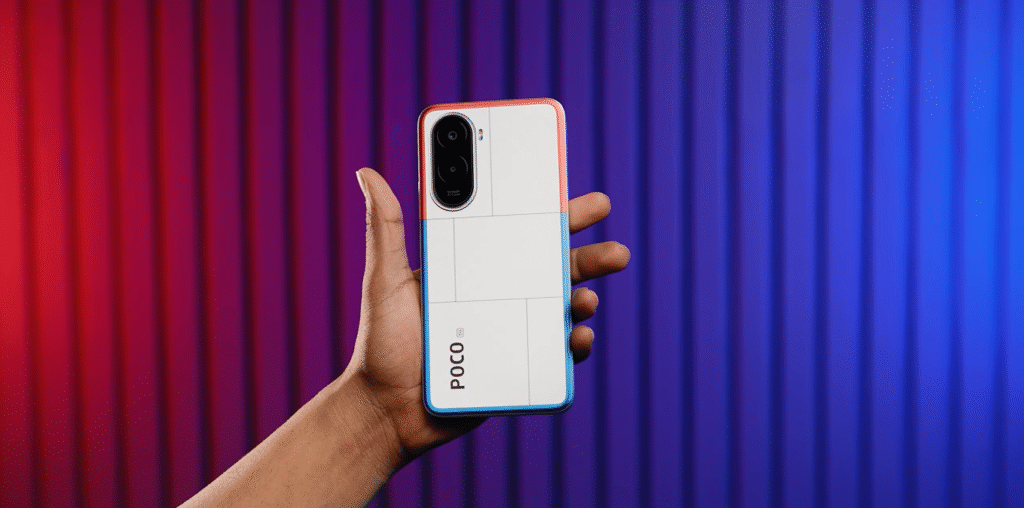
Poco M7 Plus Specifications at a Glance
Before diving deeper, here’s a quick look at the key Poco M7 Plus specs:
| Category | Specs |
| Display | 6.9″ FHD+ IPS LCD, 144Hz, Gorilla Glass 3 |
| Processor | Qualcomm Snapdragon 6s Gen 3 (6nm) |
| RAM & Storage | 6GB/128GB, 8GB/128GB (Turbo RAM expansion) |
| Software | Android 15, HyperOS 2.0 |
| Rear Camera | 50MP (f/1.8) + 2MP (depth/macro) |
| Front Camera | 8MP |
| Battery | 7,000mAh silicon-carbon |
| Charging | 33W fast charging, 18W reverse wired charging |
| Build | 8.4mm thickness, 217g weight, IP64 rating |
| Audio | Stereo speakers, IR blaster, no confirmed headphone jack |
| Price | ₹13,999 (6GB), ₹14,999 (8GB) |
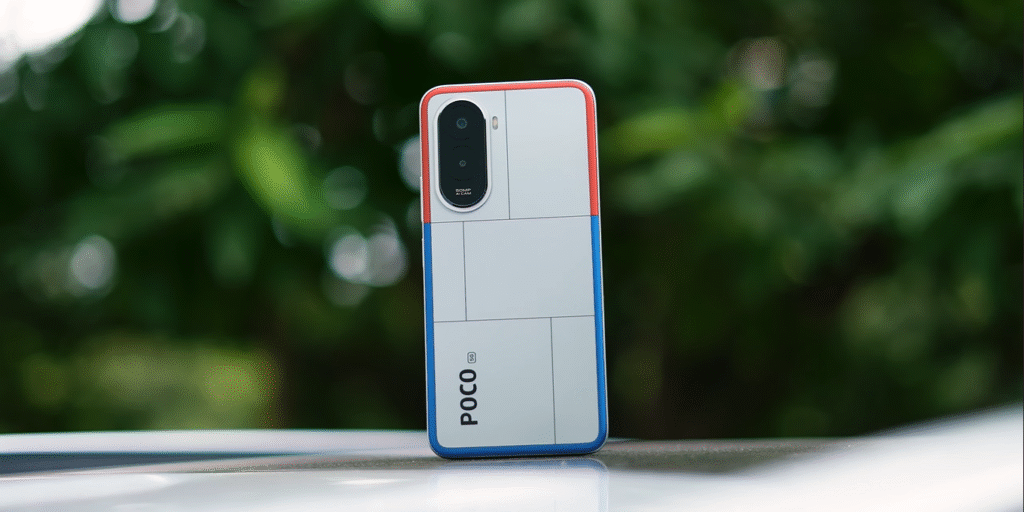
Design and Build – Strong but Stylish
Poco has bestowed upon the M7 Plus a sleek but functional design. Priced at just 217g despite its huge battery, the phone is merely 8.4mm thick—a bit heavy but perfectly balanced for prolonged use.
IP64 Dust & Splash Resistance: A step up from the M6’s IP53 rating, it grants immunity to light splashes and dust.
Colors & Finish: The device is offered in bright Poco-inspired colors with a matte-finish back panel that minimizes fingerprints and smudges.
Ergonomics: Tapered edges and flat display design are comfortable to grip, though single-hand usability is tricky due to the massive screen.
Verdict: Tough and utilitarian build with reasonable protection, though a bit on the heavy side.
Display – 144Hz Smoothness at Budget Pricing
The star attraction of the Poco M7 Plus is undoubtedly its 6.9-inch FHD+ LCD display with 144Hz refresh rate.
Refresh Rate: Adaptive 144Hz ensures smooth scrolling, gaming, and app switching. Not many sub-₹15K phones boast this feature. This is the 144hz budget phone.
Brightness: Reaches around 550–850 nits, enough for outdoor usage but not quite as bright as AMOLED competitors.
Protection: Gorilla Glass 3 guards the screen against scratches.
Special Feature – Wet Touch Tech 2.0: Unique feature that allows the screen to touch even with wet fingers—a huge advantage in wet or rainy conditions.
Verdict: Not AMOLED, but one of the finest LCDs in this segment, especially with 144Hz support.
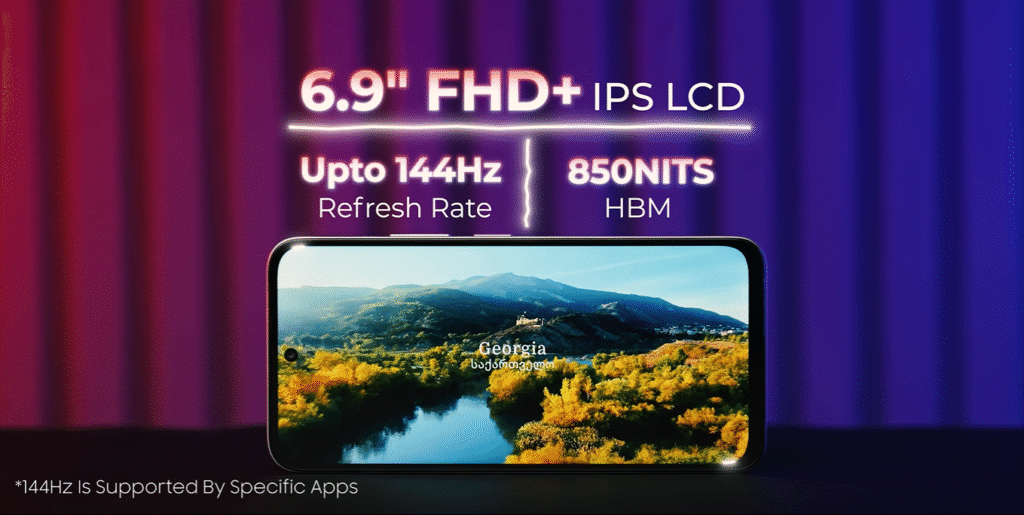
Performance – Snapdragon 6s Gen 3 in Action
Poco has opted for the Snapdragon 6s Gen 3 (6nm) chipset, paired with 6GB/8GB RAM and Turbo RAM expansion capability of up to 16GB effective.
Benchmarks & Real-World Usage
Daily Use: Smooth multitasking, app opening, and overall browsing.
Gaming: Games like BGMI, COD Mobile, and Asphalt 9 run smoothly at medium to high settings with no excess heating.
Software Support: It is backed by Android 15 with HyperOS 2.0, providing 2 major Android updates and 4 years of security patches—a significant guarantee in the budget segment.
Verdict: Strong midrange performer, good for gamers and multitaskers.
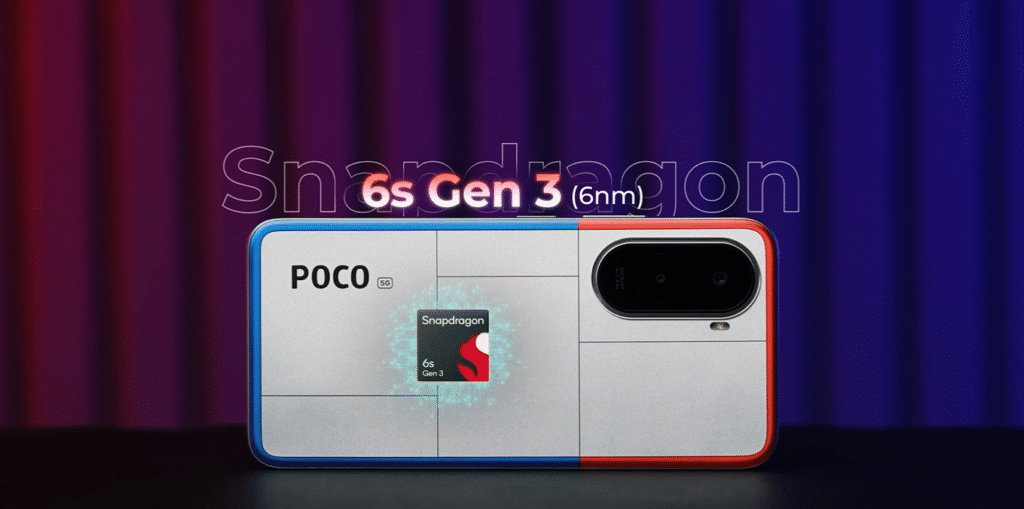
Cameras – Balanced but Not Overwhelming
Unlike previous M-series phones that had high-megapixel sensors (like 108MP), the Poco M7 Plus features a more real-world approach with a 50MP main camera.
Rear Cameras
50MP Primary (f/1.8) – Works great during the day with actual colors. Night mode is good, aided by AI processing.
2MP Secondary – Most likely a macro or depth sensor, not significant difference.
Front Camera
8MP Selfie Camera – Does great in video calls and regular selfies, but in nighttime, it’s just okay.
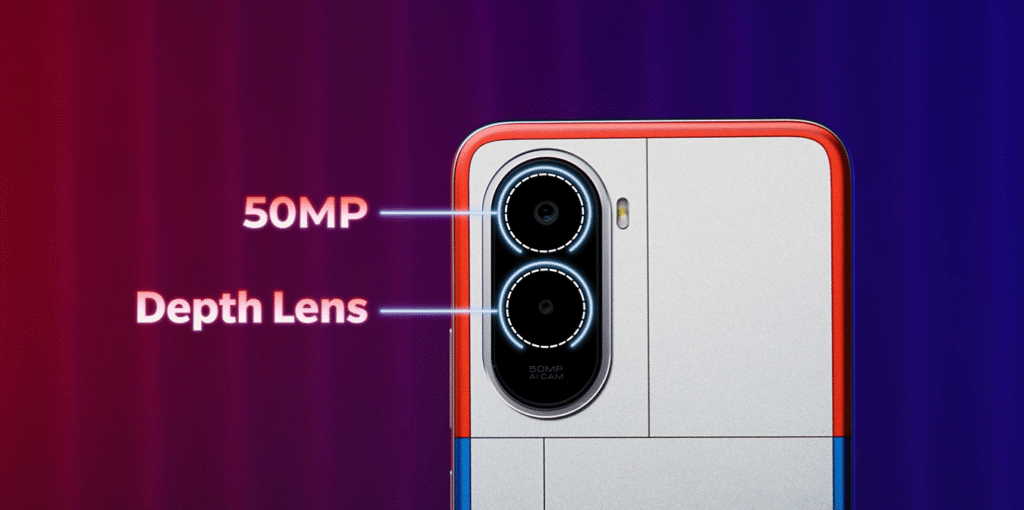
AI Features
AI Eraser (delete objects from images)
AI Sky Replacement
AI Dynamic Shot for artsy photography
Verdict: Stable camera setup for general consumers, but not camera-centric.
Battery Life – The Star of the Show
The 7,000mAh silicon-carbon battery is where the Poco M7 Plus really shines.
Longevity: Supposed to retain 80% capacity after 1,600 charge cycles (~4 years of use).
Endurance: Easily 2 full days of standard use, even heavy users can do a day and a half.
Charging
33W fast charging (0–100% in ~1.5 hours)
18W reversible wired charging—turn your phone into a power bank for others.
Verdict: Top battery phone in its segment. Power users and travelers will love it.
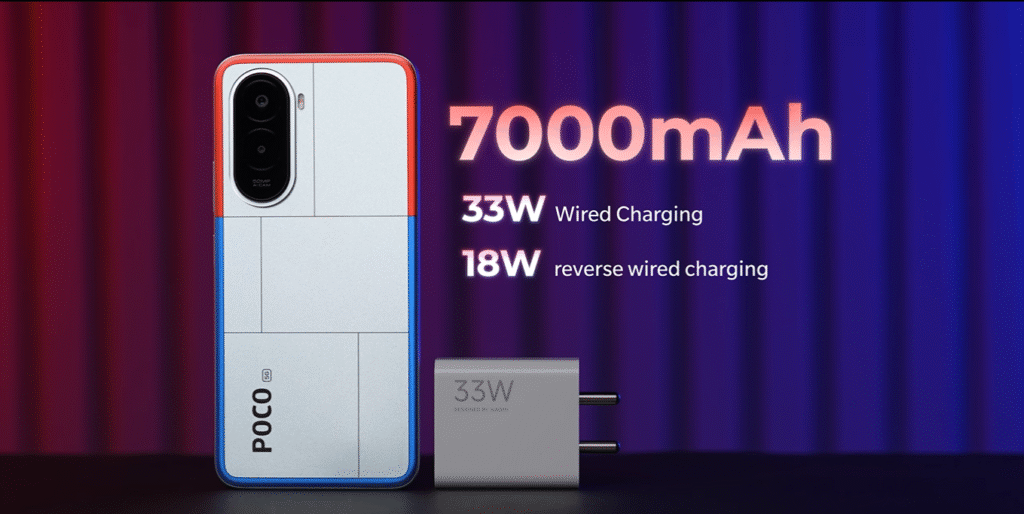
Software & Features – HyperOS 2.0 on Android 15
Poco has dropped MIUI for HyperOS 2.0, and thus the experience is smoother and snappier.
Customization: Smoother UI, better animations, and fewer bloatware compared to earlier Poco phones.
Updates: 2 Android updates + 4 years security—worth the investment for the price.
Extras: Fingerprint sensor on the side, IR blaster, dual speakers, and likely no 3.5mm headphone jack.
Verdict: HyperOS makes Poco’s budget phones feel like premium devices.
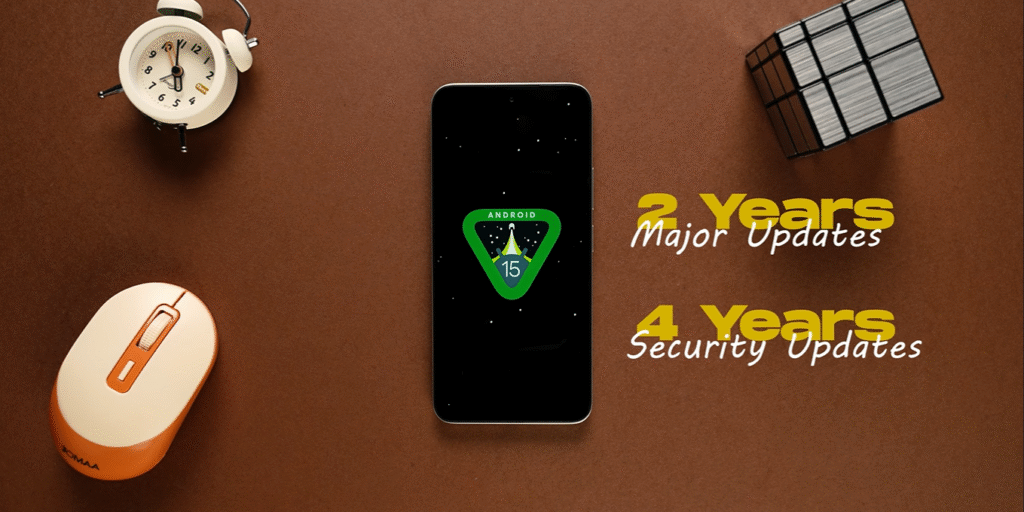
Pricing & Availability – Aggressively Priced
The Poco M7 Plus in India retails for:
₹13,999 (6GB + 128GB)
₹14,999 (8GB + 128GB)
Launch offers are ₹1,000 off through bank/exchange, effectively making the base price ₹12,999.
In Europe, it starts at €155 (~₹14,000), so it is reasonably priced in markets.
Verdict: Great value for money, especially with launch offers.
Pros & Cons of Poco M7 Plus
Pros
- Monster 7,000mAh battery with reverse charging.
- 144Hz refresh rate—rare at this budget.
- Snapdragon 6s Gen 3 provides good midrange performance.
- IP64 dust and splash protection.
- HyperOS 2.0 with Android 15 and guaranteed updates.
- Poco M7 Plus price.
Cons
- Weightier at 217g.
- No AMOLED screen, which others offer.
- Camera downgrade (108MP to 50MP).
- Headphone jack confusion.
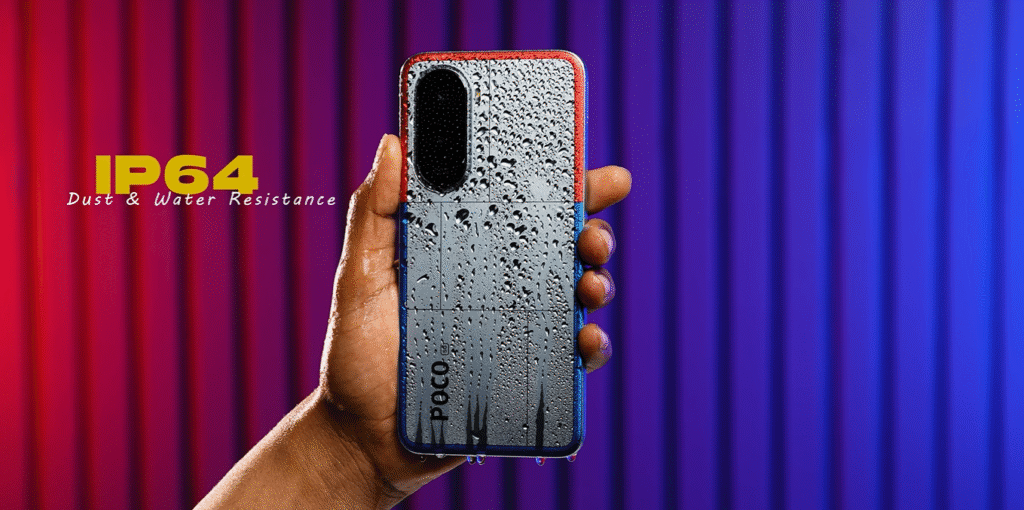
Comparisons – How Poco M7 Plus Compares
vs Poco M7 5G
M7 Plus has bigger battery (7,000mAh vs 5,100mAh).
M7 Plus has Snapdragon 6s Gen 3 vs Dimensity chip in M7.
M7 is thinner but with smaller battery.
vs Realme Narzo 65 Pro
Realme offers AMOLED with enhanced brightness.
Poco fights back with bigger battery & IP64 rating.
vs Redmi Note 14 5G
Same performance, but Poco takes a slight lead in battery life.
Redmi offers better camera setup.
Who Should Choose the Poco M7 Plus?
- Battery-Oriented People – If you hate charging your phone daily, it’s for you.
- Budget Gamers – Smooth 144Hz display + Snapdragon chipset makes it game-ready.
- Travelers & Outdoor Users – Huge battery, IP64 toughness, and reverse charging add utility.
- Value Buyers – Below ₹15K, the bargain cannot be matched.
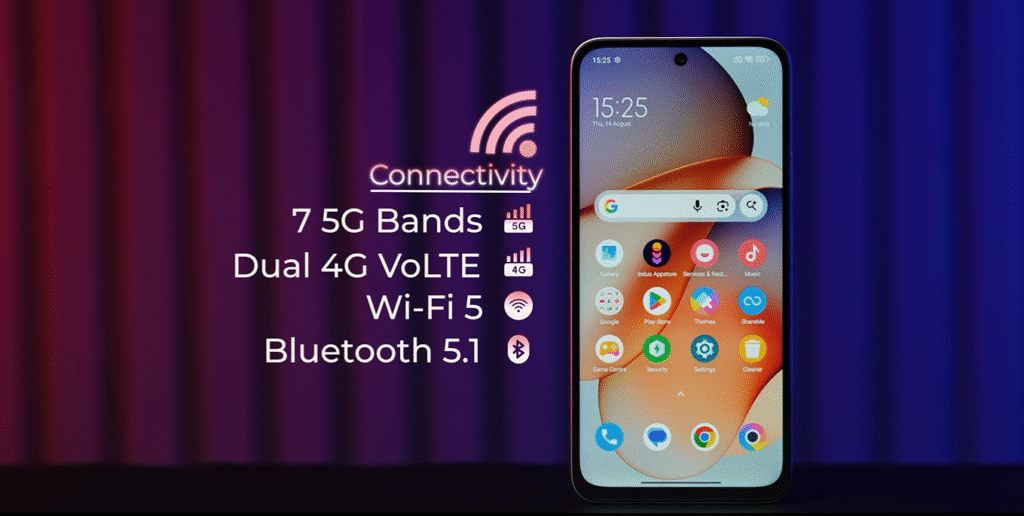
Final Verdict – A Battery Beast That Disobeys Value
The Poco M7 Plus is not trying to be the ultimate camera phone or the thinnest phone. Instead, it is focusing on battery life, performance, and functionality—and doing so superbly.
For ₹13,999, you get a phone that lasts longer than almost every other one in the battery life department, deals with daily multitasking like a pro, and gives you a trouble-free experience with HyperOS 2.0. The trade-offs (LCD instead of AMOLED, ordinary cameras, and slightly heavier build) are justified considering the sizeable battery and overall package.
If you’re in the market for a budget 5G phone in 2025, the Poco M7 Plus is one of the best choices available.
Related posts:
- Lava Blaze AMOLED 2 Full Review: Thin, Trendy, and Affordable AMOLED Experience in 2025
- Ai+ Pulse & Nova 5G Full Review: The Smartest 5G Beast
- Realme 15 Pro 5G Full Review: The AI Party Phone That Nails the Mid-Range Game
- iQOO Z7 5G Review – A Power-Packed Smartphone for Gamers & Tech Lovers in 2025

